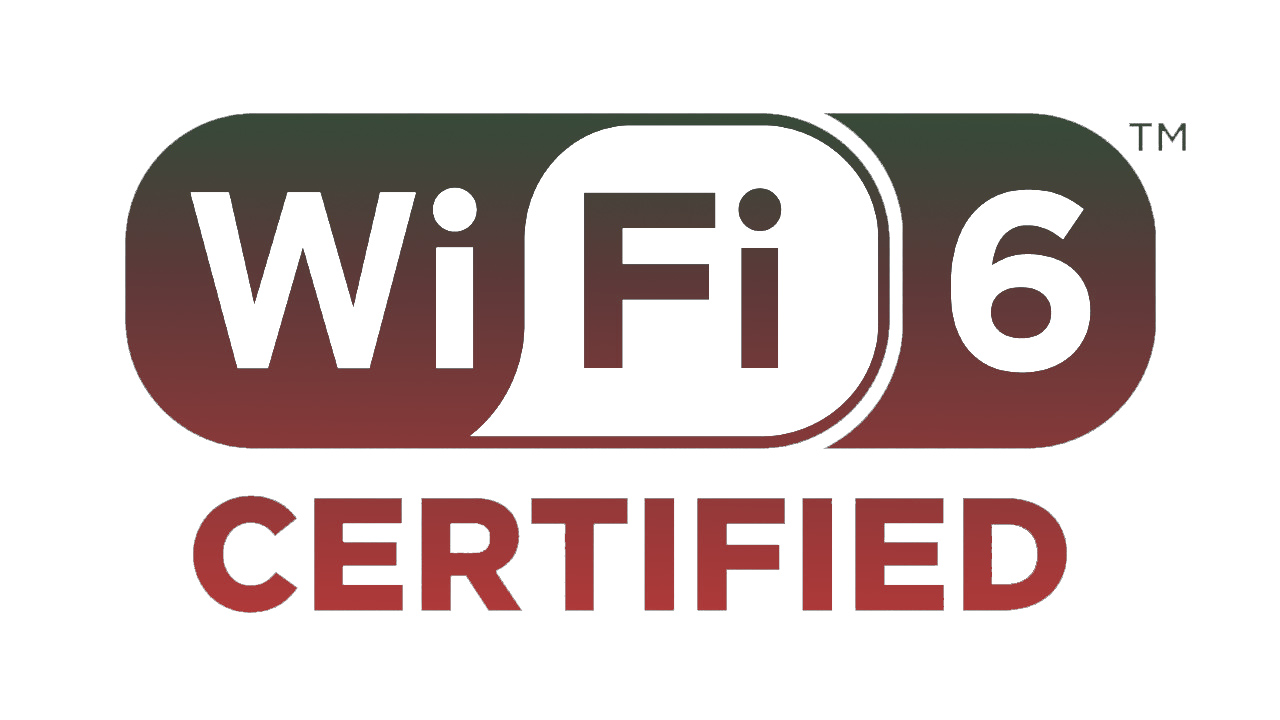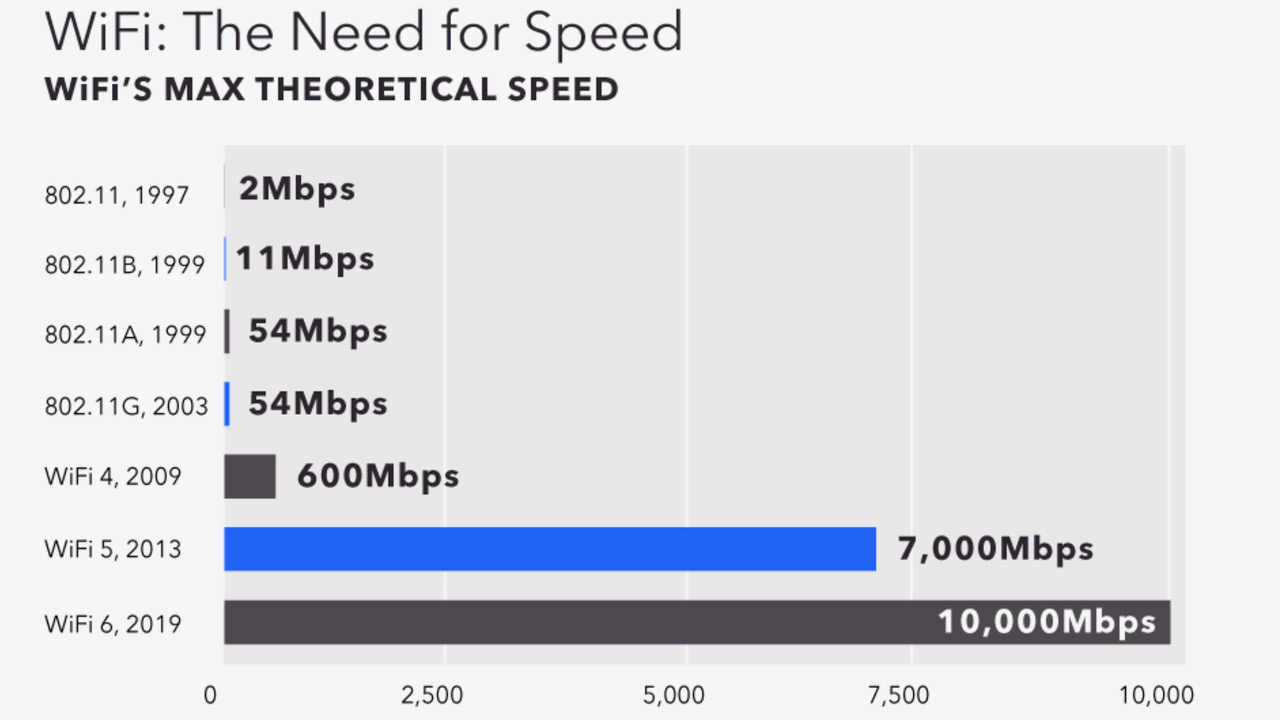
Wi-Fi 6 – the next-generation of Wi-Fi standards – has officially launched, promising to usher in a new era of speeds and connectivity.
These standards, released by the non-profit Wi-Fi Alliance, outline the minimum requirements needed for devices, routers and networks to be officially Wi-Fi 6 certified.
The technology has been in the works for the best part of a decade and, while a number of Wi-Fi 6 certified devices are already on sale – namely the iPhone 11 range, Samsung’s Galaxy Note 10 and Netgear’s range of Nighthawk AX routers – the official release is significant because it will open up the standards to even more manufacturers.
What is Wi-Fi 6?
As the name suggests, Wi-Fi 6 is the sixth generation of Wi-Fi technology standards and is the first to be branded in this way. While its official name is 802.11ax, or high-efficiency wireless, and it follows on from 802.11ac, 802.11n and 802.11g, these monikers aren’t particularly palatable for the everyday consumer to get their head around, so the Alliance is taking a new route.
As part of the global launch, it is rebranding all existing Wi-Fi standards to follow suit: Wi-Fi 6 is used to describe devices that support 802.11ax technology, Wi-Fi 5 is the new name for 802.11ac technology, Wi-Fi 4 is used to identify devices that support 802.11n technology, Wi-Fi 3 refers to 802.11g, and so on. But there’s a lot more to Wi-Fi 6 than a simple name change.
It’s been more than two decades since the initial Wi-Fi standards were released and very little has changed in terms of how these networks work. Speeds have increased, latency is much improved but the fundamental technology powering the whole system still works largely the way it always has, and is not suited for the rising number of connected devices.
Whereas the Alliance and manufacturers largely focused on increasing speeds with the launch of each of the previous set of standards, Wi-Fi 6 goes a step further, using recent advances in technology to not only boost speed, but also improve efficiency, extend range, enhance security and increase the number of devices connected to a network.
SIGN UP FOR E-MAIL NEWSLETTERS
Get up to speed with 5G, and discover the latest deals, news, and insight!
These improvements will make browsing and downloading faster, yet they also promise to boost the battery life of phones, save energy and, subsequently money, on energy bills, and bring billions of predicted Internet of Things devices online.
If this sounds familiar, it’s because the claims being promised by Wi-Fi 6 aren’t too dissimilar to those promised by 5G, and in a number of ways the two advancements are linked.
What’s wrong with current Wi-Fi networks?
To understand why Wi-Fi 6 is set to be so groundbreaking, it’s worth explaining how current Wi-Fi networks work.
Wi-Fi networks, whether those in your home or large-scale public networks covering stadiums, hospitals and factories, all connect to devices in the same way – via access points. Every smart device, from phones to TVs and smart lightbulbs, get their data from these access points and they can subsequently send data back. This data is sent over channels, and sub channels, which were introduced and developed as Wi-Fi standards were improved in a bid to streamline the process and help manage the influx of connections.
The problem with the majority of current Wi-Fi technology is that these access points can only send data to one device at a time, so the other devices have to sit and wait their turn. Then, when the access point is receiving data, it has to stop sending data. This is a slow, inefficient process. On your home Wi-Fi network, or a small business network, it’s unlikely you’ll be impacted by these delays because the number of devices is relatively small and the delay may be milliseconds.
However, on public networks, these milliseconds add up. When access points are sharing and receiving data for dozens, if not hundreds, of devices, the system almost grinds to a halt. Even with the enhanced speeds seen in Wi-Fi 5, many networks still rely on this push and wait system, which is incredibly inefficient.
To further add to this delay, each time the access point sends data to a device, it has to send the whole channel, including its sub-channels, individually. Even if the device being served only needs a tiny bit of bandwidth, the access point has to send it all and wait for it to be returned, all the while that channel and bandwidth can’t be used by any other device.
How does Wi-Fi 6 make networks faster and more efficient?
Wi-Fi 6, like 5G before it, throws this systems (almost) out of the window. It takes existing technologies – to make sure its systems can be backwards compatible – and combines them in a way to maximise efficiency in populated areas, such as stadiums and airports, while also benefiting the increasing number of devices in our homes and businesses.
Wi-Fi 6 uses access points that can send data to multiple devices, all at once, rather than individually. These access points work out how much bandwidth is needed for each task and reserves the optimum amount of bandwidth for that device. For instance, a 4K video requires much more bandwidth than making a VOIP call, so the access point reserves and sends the larger amount of data to the streaming device, at the same time it is sending the smaller packet to the VOIP call, all at once, without slowing down the other.
In the second wave of Wi-Fi 5, MU-MIMO (Multiple user, multiple input, multiple output) technology was introduced. MU-MIMO on Wi-Fi 5 got round existing single access point delivery problems by sending multiple (four) streams at once. Wi-Fi 6 pushes this up to eight, while also using Orthogonal Frequency Division Multiple Access (OFDMA) technology to further split these MU-MIMO streams into four. Then, beamforming technology, makes sure these streams are delivered directly to their intended device.
Wi-Fi 6 speed
To boost bandwidth, Wi-Fi 6 operates in both the 2.4Ghz and 5Ghz ranges. 802.11ac only operates in the 5Ghz range and while this can be good for speed, it reduces the number of channels available. Early Wi-Fi 6 chipsets support a total of 12 channels, eight in the 5Ghz and four in the 2.4Ghz range.

Finally, Wi-Fi 6 technology has a feature called Target Wake Time. With existing networks, if a Wi-Fi radio inside a device “went to sleep”, it could lose connection to the access point so it would stay awake, even if it wasn’t needed or being used. Wi-Fi 6’s Target Wake Time feature only connects to, or “wakes”, these Wi-Fi radios at a certain time of day or for a certain type of task, before letting it power down. By only using power when needed, this feature can significantly reduce the battery consumption, and energy use, of devices.
What devices are compatible with Wi-Fi 6 and do I need to upgrade?
We’ve seen a small number of devices being launched in recent months that are Wi-Fi 6 Certified, including the Samsung Galaxy Note 10 and the iPhone 11 range. Netgear was one of the first to sell a range of Wi-Fi 6 routers, under its Nightgear AX brand and other manufacturers, including Asus and TP-Link have also pioneered this technology.
Now the Wi-Fi 6 standards have officially launched, we’d expect to see even more devices and routers carrying the Wi-Fi 6 Certified badge hitting the shelves. All of these Wi-Fi 6 devices will be backwards compatible with your existing router, meaning they’ll work with older Wi-Fi standards. Similarly, older Wi-Fi devices will be able to connect to new Wi-Fi 6 routers. However, only Wi-Fi 6 devices will benefit from the faster Wi-Fi 6 speeds, and you won’t be able to use Wi-Fi 6 features without a Wi-Fi 6 router.
| Header Cell - Column 0 | First Official Wi-Fi 6 Certified Products |
|---|---|
| Row 0 - Cell 0 | Broadcom® BCM43698 |
| Row 1 - Cell 0 | Broadcom® BCM43684 |
| Row 2 - Cell 0 | Cypress CYW 89650 Auto-Grade Wi-Fi 6 Certified |
| Row 3 - Cell 0 | Intel® Wi-Fi 6 (Gig+) AX200 (for PCs) |
| Row 4 - Cell 0 | Intel® Home Wi-Fi Chipset WAV600 Series (for routers and gateways) |
| Row 5 - Cell 0 | Marvell 88W9064 (4x4) Wi-Fi 6 Dual-Band STA |
| Row 6 - Cell 0 | Marvell 88W9064 (4x4) + 88W9068 (8x8) Wi-Fi 6 Concurrent Dual-Band AP |
| Row 7 - Cell 0 | Qualcomm® Networking Pro 1200 Platform |
| Row 8 - Cell 0 | Qualcomm® FastConnect 6800 Wi-Fi 6 Mobile Connectivity Subsystem |
| Row 9 - Cell 0 | Ruckus R750 Wi-Fi 6 Access Point |
| Row 10 - Cell 0 | Samsung Galaxy Note 10 |
How will Wi-Fi 6 and 5G work together?
A new report from the Wireless Broadband Alliance (WBA) – whose members include Facebook, HPE Aruba, Nokia, Orange, Qualcomm, Samsung, Swisscom, Telstra and T-Mobile – has revealed five essential building blocks for a successful convergence between Wi-Fi 6 and 5G.
The report, led by Broadcom, Cisco, Intel and Orange, looks at technologies that enable access to 5G services via Wi-Fi.
“It highlights several critical action areas for industry bodies and operators related to supporting trusted WLAN integration with the 5G core and enabling QoS differentiation for 5G flows over WLAN access,” the WBA announcement explained. “The specific enhancements and suggested actions for the industry are broken down into five distinctive key areas.”
Five things that will enable convergence with 5G
The organisation says that convergence is critical to enabling new breed of services, applications and experiences such as Industry 4.0, AR/VR, Connected Cities and mobile edge computing. And the report focuses on five critical areas that must be addressed, which are:
- 5G and Wi-Fi convergence architecture
- Multi-access functionality for Access Traffic Steering, Switching and Splitting (ATSSS)
- End-to-end QoS (Quality-of-Service)
- Policy Interworking and enhancements across 5G and Wi-Fi
- Support for Wi-Fi only devices
The report builds on previous work carried out by the WBA, which covered the benefits and use cases of Wi-Fi 6 and 5G convergence, such as an increase in deployment possibilities and scenarios for operators and access providers; opportunities connected to Industry 4.0; smart city development; the opportunity for fixed wireless access services; and the ability to access 5G services via Wi-Fi only devices.
- All you need to know about 5G internet, and whether it'll replace cable
- Get the latest investment updates with our 5G stocks news
- We reveal how 5G technology works, and is set to transform the planet
- Experts are already looking to 2030, and here's what to expect from 6G
Victoria Woollaston is a freelance science and technology journalist with more than a decade’s experience writing for Wired UK, Alphr, Expert Reviews, TechRadar, Shortlist and the Sunday Times. She has a keen interest in next-generation technology and its potential to revolutionise how we live and work.

